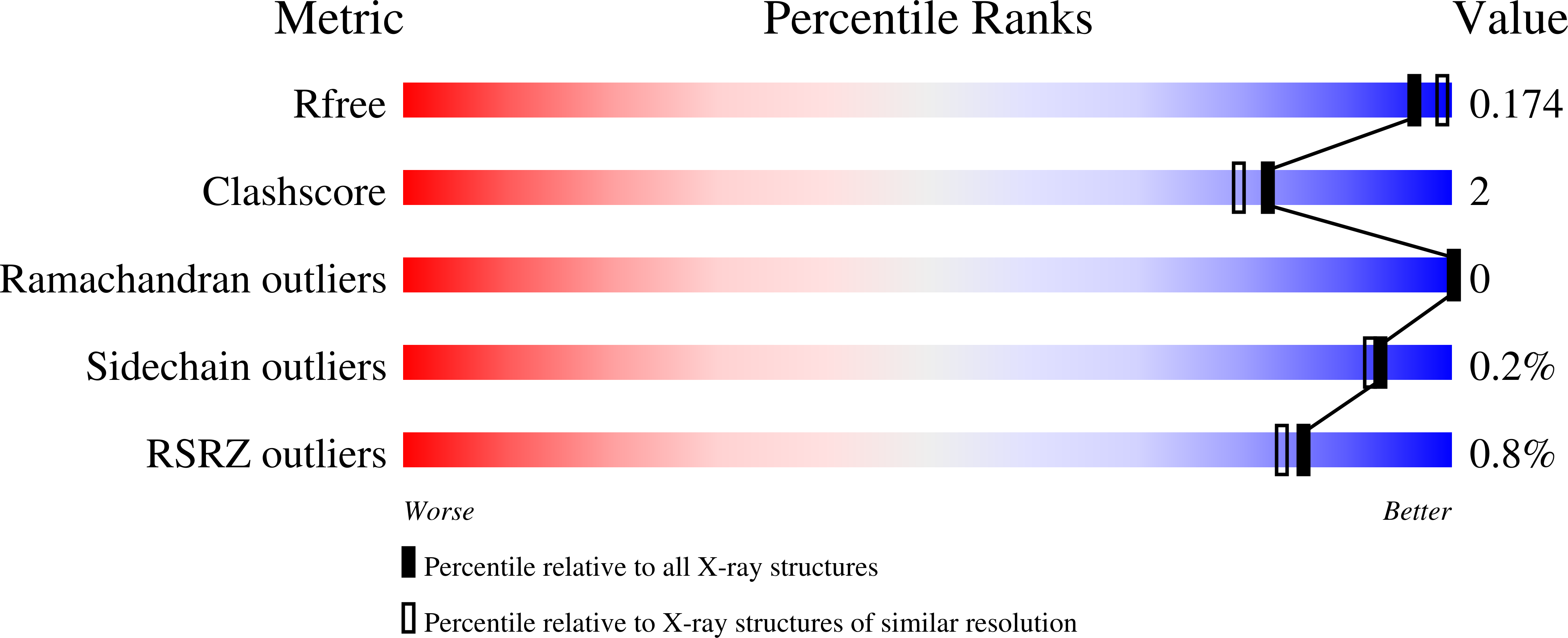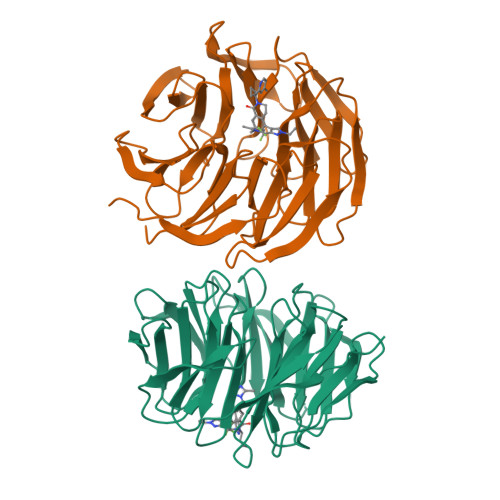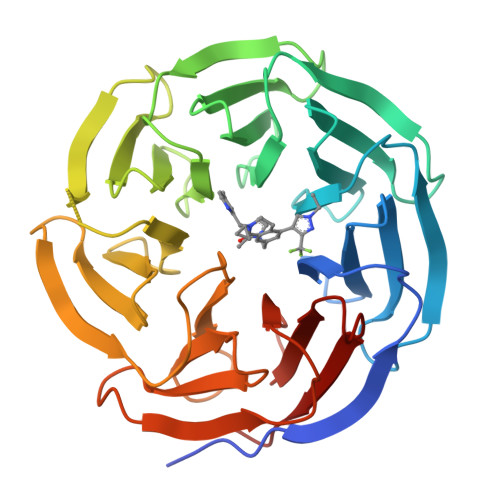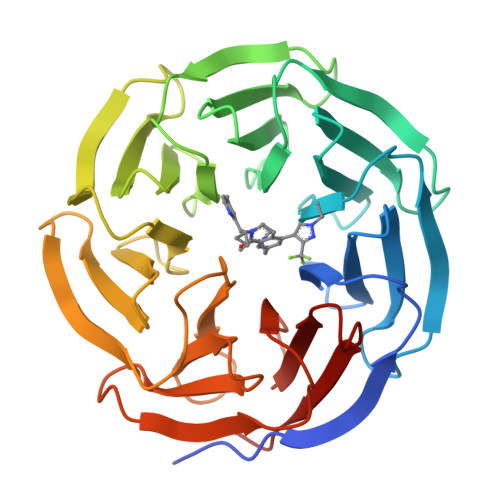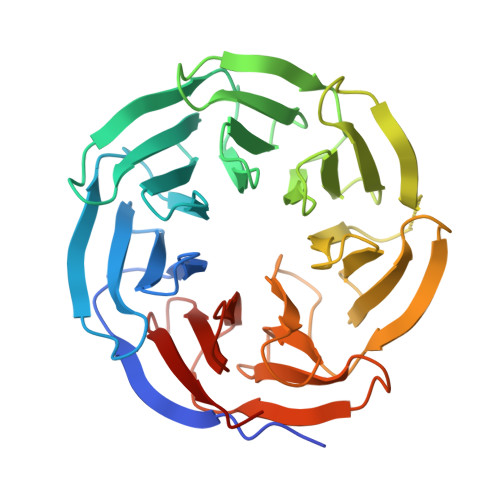Discovery of Potent Orally Bioavailable WD Repeat Domain 5 (WDR5) Inhibitors Using a Pharmacophore-Based Optimization.
Teuscher, K.B., Meyers, K.M., Wei, Q., Mills, J.J., Tian, J., Alvarado, J., Sai, J., Van Meveren, M., South, T.M., Rietz, T.A., Zhao, B., Moore, W.J., Stott, G.M., Tansey, W.P., Lee, T., Fesik, S.W.(2022) J Med Chem 65: 6287-6312
- PubMed: 35436124
- DOI: https://doi.org/10.1021/acs.jmedchem.2c00195
- Primary Citation of Related Structures:
7U9Y, 7UAS - PubMed Abstract:
WD repeat domain 5 (WDR5) is a nuclear scaffolding protein that forms many biologically important multiprotein complexes. The WIN site of WDR5 represents a promising pharmacological target in a variety of human cancers. Here, we describe the optimization of our initial WDR5 WIN-site inhibitor using a structure-guided pharmacophore-based convergent strategy to improve its druglike properties and pharmacokinetic profile. The core of the previous lead remained constant while a focused SAR effort on the three pharmacophore units was combined to generate a new in vivo lead series. Importantly, this new series of compounds has picomolar binding affinity, improved cellular antiproliferative activity and selectivity, and increased kinetic aqueous solubility. They also exhibit a desirable oral pharmacokinetic profile with manageable intravenous clearance and high oral bioavailability. Thus, these new leads are useful probes toward studying the effects of WDR5 inhibition.
Organizational Affiliation:
Leidos Biomedical Research, Frederick National Laboratory for Cancer Research, Frederick, Maryland 21701-4907, United States.







